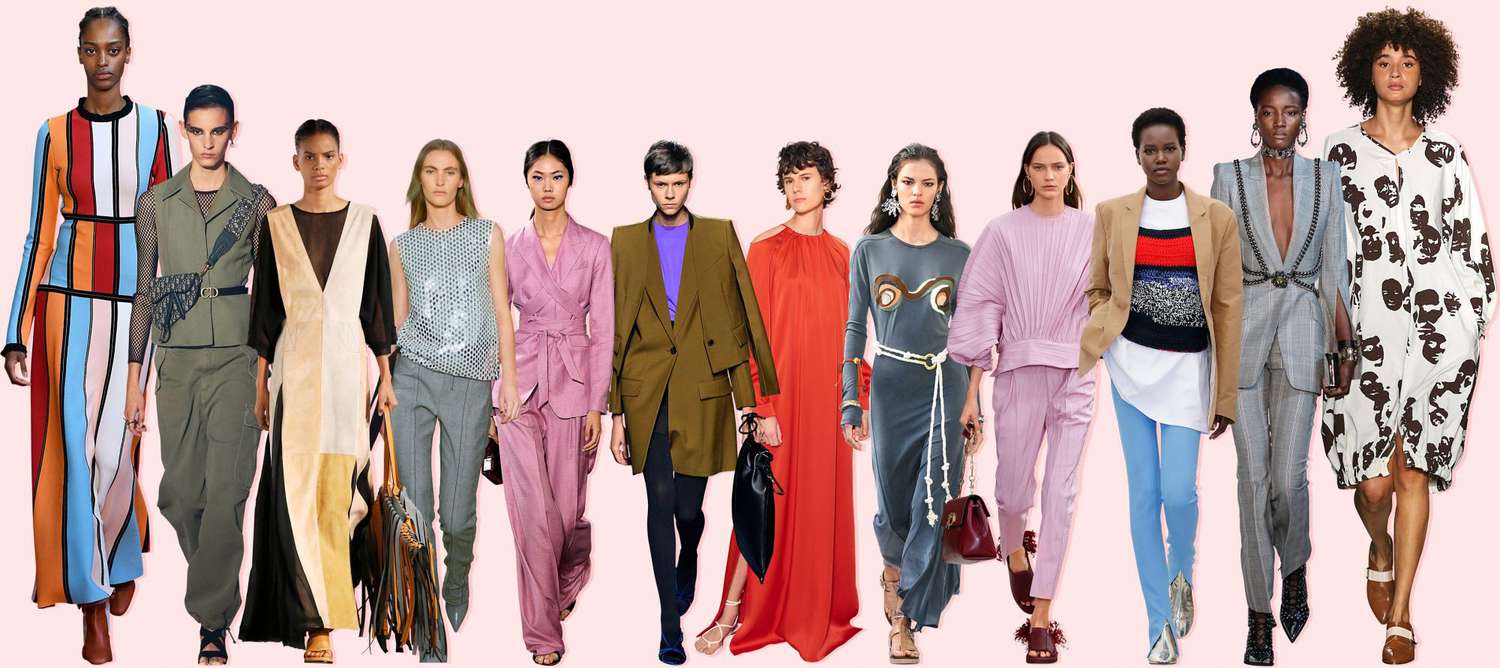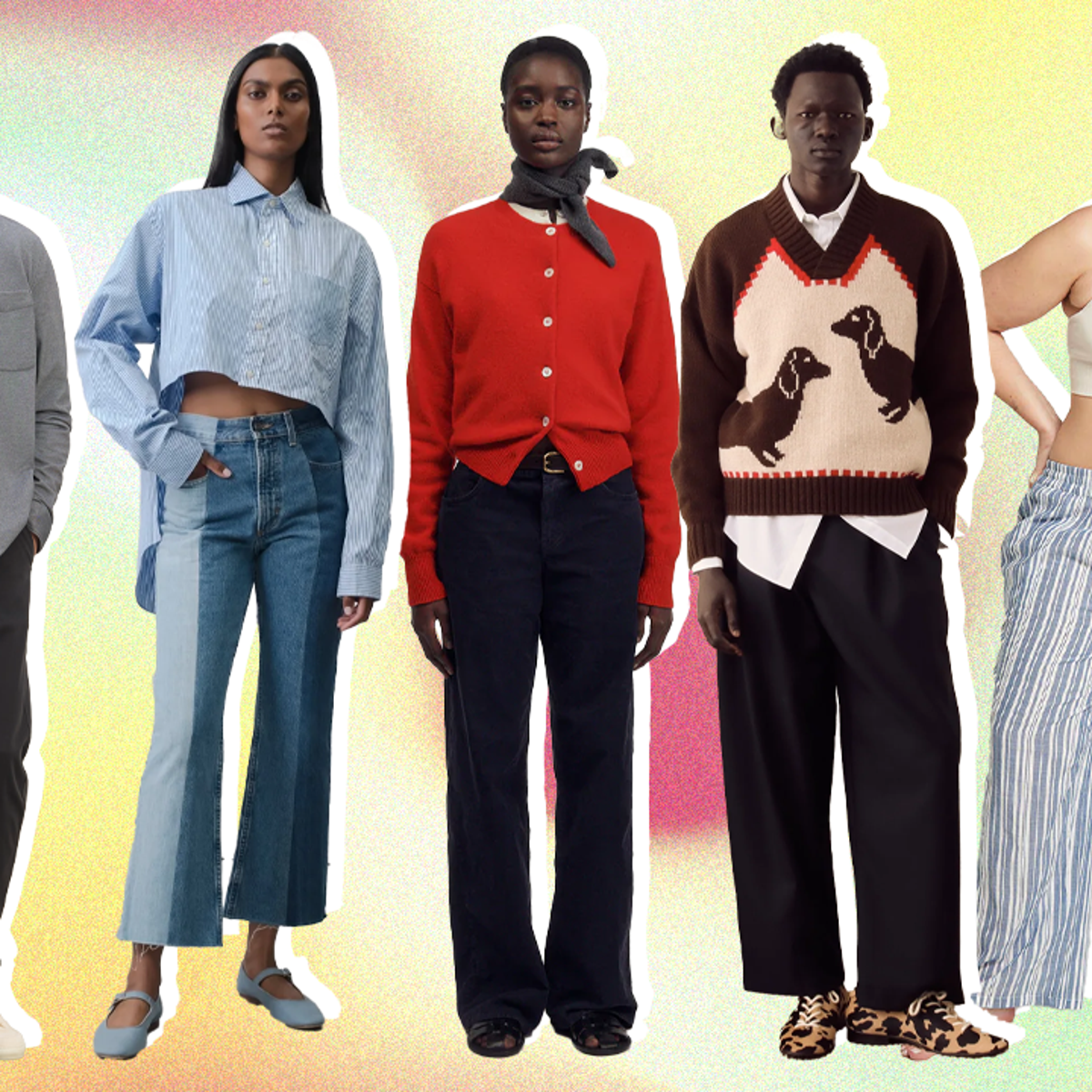Fabric Fit Guide: How to Pick Branded Clothing That Moves With You
Fabric Fit Guide: How to Pick Branded Clothing That Moves With You
Blog Article
Understanding Clothes: The Importance of Fabric Choices in Your Closet
The choice of material in clothes plays a critical function in both aesthetic appeals and performance. Various products use differing degrees of longevity, breathability, and convenience, straight affecting the wearer's experience. Recognizing these subtleties can boost one's wardrobe substantially. Yet, numerous ignore just how these selections can impact not just personal style, yet also sustainability. What material choices could redefine your closet and straighten it with both design and duty?
The Duty of Material in Fashion and Functionality

Common Material Types and Their Characteristics
When picking clothes, comprehending the characteristics of common fabric kinds is important for making informed choices. Cotton, a widely-used all-natural fiber, is recognized for its breathability, gentleness, and adaptability, making it appropriate for laid-back wear and day-to-day garments. Bed linen, an additional all-natural alternative, boasts excellent moisture-wicking homes and an unique appearance, suitable for warm climates.Wool, commonly favored for its warmth and resilience, differs in excellence; merino woollen is soft against the skin, while coarser kinds are made use of for outerwear. Artificial textiles like polyester and nylon use toughness and resistance to creases, making them preferred for activewear and travel garments. Blends, which incorporate synthetic and natural fibers, can improve functionality while maintaining comfort. By recognizing these textile characteristics, people can pick apparel that aligns with their lifestyle and aesthetic choices.
Breathability and Comfort: Choosing the Right Fabrics for Various Environments
Choosing the right materials for numerous environments can significantly boost comfort and overall wearability. Breathable materials are necessary in hot environments, as they allow air blood circulation and moisture evaporation. Fabrics such as cotton, bed linen, and moisture-wicking synthetics effectively attract sweat away from the body, maintaining the user cool and dry. Alternatively, in chillier environments, thicker textiles like wool or fleece offer insulation while preserving breathability, guaranteeing warmth without overheating.Additionally, the choice of material weight plays an important duty; lightweight materials are more suitable for summertime, whereas heavier alternatives are fit for winter season wear. Recognizing the unique homes of each textile allows people to clothe suitably for varying climate condition. Ultimately, choosing breathable and comfortable textiles customized to specific climates can substantially boost day-to-day convenience and enhance the general experience of wearing clothing.
Longevity and Treatment: How Material Influences Longevity of Your Wardrobe
Picking the best materials can considerably affect the durability and care needs of a wardrobe. Fabrics such as cotton and polyester are understood for their strength and simplicity of maintenance, making them excellent for daily wear. In comparison, fragile materials like silk and shoelace need even more careful handling and specialized cleaning approaches, which can boost the time and initiative required for care. Branded Clothing.Durability is likewise affected by the textile's weave and coating; snugly woven materials have a tendency to resist deterioration far better than loosely woven options. Furthermore, artificial blends frequently offer improved sturdiness, incorporating the best top qualities of multiple fibers.Understanding the treatment instructions for each and every fabric is important, as improper home washing or drying can lead to premature wear. Inevitably, selecting resilient products can bring about a longer-lasting closet, lowering the frequency of substitutes and adding to an extra sustainable fashion choice
The Influence of Material on Fit and Shape

Lasting Textile Options: Making Eco-Friendly Choices
The effect of fabric prolongs past fit and silhouette to include environmental variables, motivating an expanding interest in sustainable textile choices. Eco-friendly fabrics, such as natural cotton, hemp, and Tencel, are obtaining grip amongst consumers who prioritize sustainability in their wardrobes. These products are frequently generated with less chemicals and water, lowering their environmental footprint.Additionally, recycled fabrics, made from post-consumer waste, use an ingenious service to the textile market's contamination problem. Brands increasingly embrace openness in their sourcing techniques, enabling customers to make informed decisions regarding their purchases.Choosing sustainable materials not only supports ethical practices but additionally motivates the garment industry to adopt more liable production methods. As recognition of ecological concerns climbs, individuals are prompted to assess the long-term effect of their fabric choices, promoting an activity in the direction of a much more sustainable and eco aware technique to fashion.
Raising Design: How Textile Can Change an Outfit
While many might concentrate on shade and cut when selecting an outfit, the selection of fabric plays a vital function in boosting design and boosting general look. Different materials communicate unique state of minds and messages; as an example, silk radiates high-end and sophistication, while denim provides a casual, loosened up vibe. The appearance and drape of a fabric can substantially alter the silhouette, with structured materials offering a polished appearance and softer ones creating a much more fluid, relaxed aesthetic.Moreover, the weight of the textile influences wearability throughout seasons. Lightweight materials like bed linen and cotton are optimal for summer, while view website larger materials such as woollen and velour give heat and beauty in cooler months. Comprehending material homes, such as breathability and stretch, also equips people to make enlightened options that improve convenience without jeopardizing style. Inevitably, the ideal textile can change an attire from average to phenomenal, making it an essential factor to consider in any kind of closet.
Often Asked Concerns
Just how Do I Identify the Fabric Material of My Apparel?
To recognize material material, check out here one can analyze treatment tags, conduct shed tests for fiber recognition, or consult material examples. These approaches help separate materials, making sure educated selections for clothing treatment and maintenance in daily wear.
Can Fabric Option Affect My State Of Mind or Confidence?
Material option can substantially affect a person's mood and self-confidence. Branded Clothing. Certain materials may evoke feelings of comfort or style, while others can feel unflattering or limiting, inevitably affecting self-perception and emotional wellness throughout the day
What Fabrics Are Finest for Sensitive Skin?
For people with sensitive skin, all-natural materials like bamboo, linen, and cotton are typically recommended. These materials are breathable, hypoallergenic, and less likely to create irritability, making them ideal selections for convenience and skin health and wellness.
Exactly how Do I Appropriately Clean and Take Care Of Various Fabrics?
To correctly wash and care for various textiles, one have to take into consideration each product's details needs, consisting of temperature level settings, detergents, and drying methods, making sure durability and preserving the textile's initial high qualities for suitable use.
Exist Certain Fabrics for Athletic or Efficiency Wear?
Athletic or efficiency wear often uses materials such as spandex, polyester, and nylon. These products are designed for moisture-wicking, breathability, and versatility, improving movement and comfort during exercises while giving resilience and support. Alternatively, in cooler climates, thicker textiles like woollen or fleece offer insulation while keeping breathability, guaranteeing heat without overheating.Additionally, the selection of fabric weight plays a crucial function; lightweight materials are more effective for summer season, whereas much heavier choices are fit for wintertime wear. In contrast, delicate materials like silk and shoelace require even more mindful handling and specialized cleansing approaches, which can boost the time and effort required for care.Durability is additionally affected by the fabric's weave and finish; snugly woven materials tend to withstand wear and tear far better than freely woven options. In comparison, stiff textiles can restrict activity but provide a timeless, sleek look.Moreover, the density and structure of the material can influence the aesthetic understanding of body shape. The effect of fabric prolongs past fit and silhouette to incorporate ecological variables, prompting an expanding interest in lasting textile options. The structure and drape of a fabric can dramatically change the silhouette, with organized fabrics offering a polished look and softer ones developing an extra fluid, loosened up aesthetic.Moreover, the weight of the fabric affects wearability across seasons.
Report this page